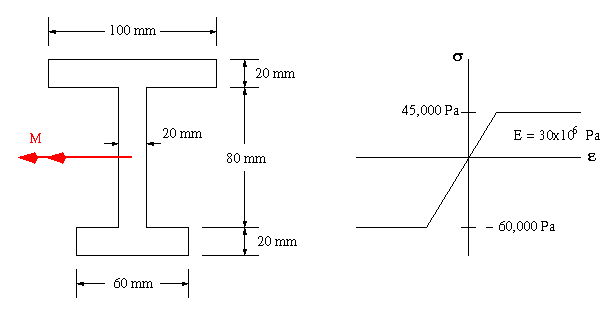



We must first find the location of centroid and the moment of inertia about the horizontal centroidal axis (x axis)

The moment of inertia about the x axis is all that is needed because with the product of inertia Ixy equal to zero and no moment about the y axis, the general elastic bending formula reduces to

(a) Because the elastic-limit stress in the tension side of the stress-strain
diagram is less than that in the compression side, the tensile limit will be
the maximum stress allowable. Since the bottom side is in tension, let the
stress at that location be equal to the limit of 45,000 Pa.
This gives a maximum moment of
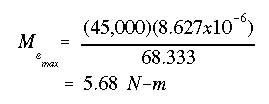
Now, check the top to make sure the compressive stress doesn't exceed its limit (60,000 Pa).

Therefore, the maximum elastic moment is

The strain and stress diagrams corresponding to the maximum elastic moment
are shown below. Notice that the NA in this case coincides with the
horizontal centroidal axis (x axis).
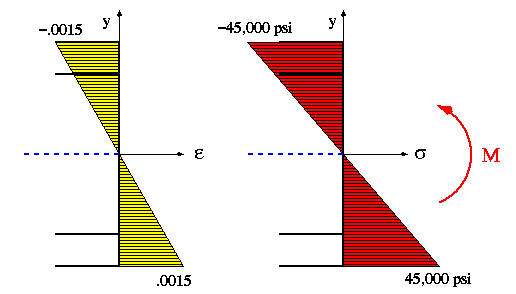
(b) We know the elastic-limit strain in tension and compression to be
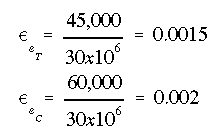
With the strain at the bottom now at 0.003, the elastic-inelastic interface, so to speak, is at some location between the NA and the bottom surface. Since stress-strain variations in tension and compression are different in the inelastic region, the NA will not pass through the centroid. Therefore, NA will not coincide with the x axis in this case. However, the NA will be parallel to the x axis. So we know its orientation but not its location. The location of NA is found through an iterative process.
Assume NA is @ 68.333 mm from the bottom. Through similar triangles, the elastic-inelastic interface can be found
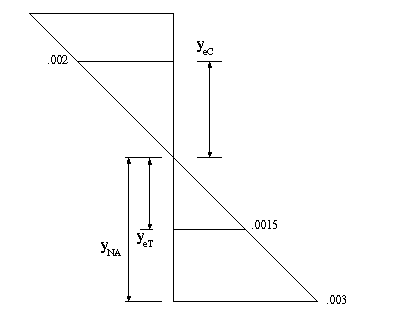
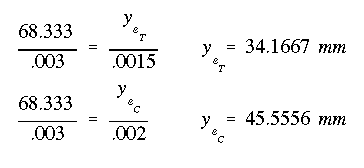
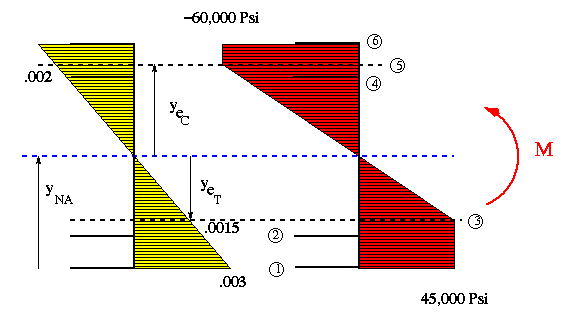
If the location of NA is correct, then the summation of forces in the normal
direction must be zero.

Based on the stress diagram shown above, the force equation is written as
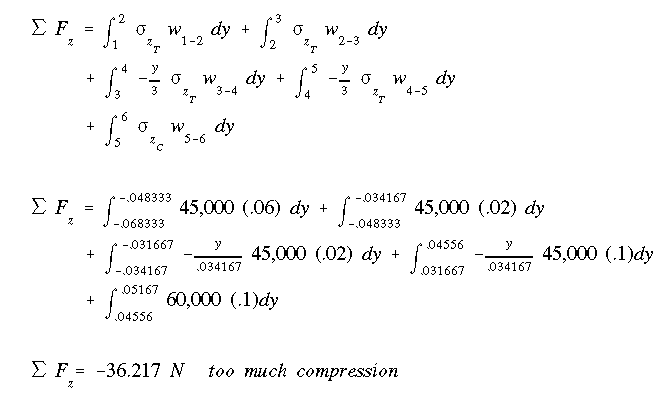
Since the sum of axial force components is not zero, the assumed location of NA
is incorrect. The negative value indicates that the NA must be moved in the
compression side as to reduce the area which is in compression or to increase
the area in tension. For the second guess, assume NA to be @ 80 mm from the
bottom surface and repeat the procedure.
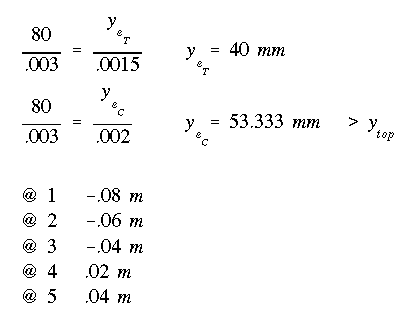
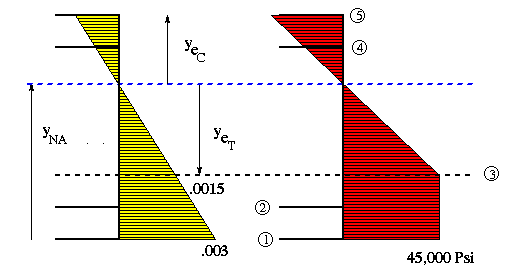
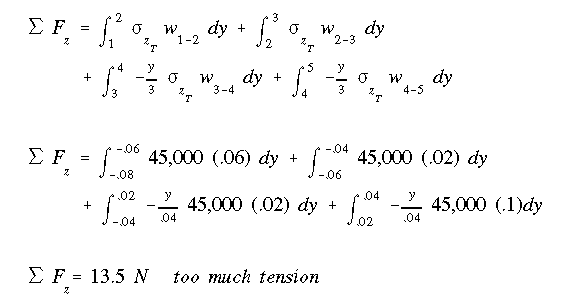
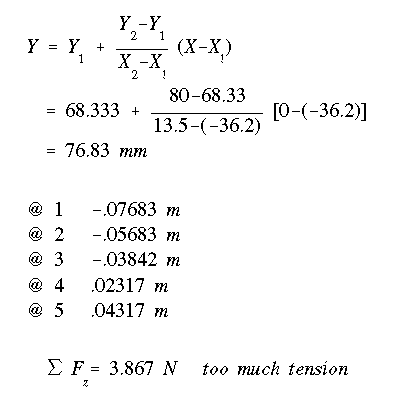
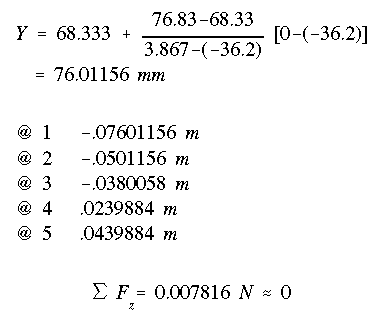
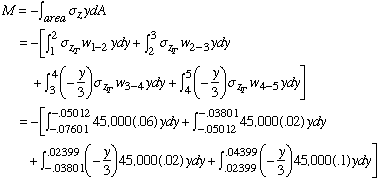

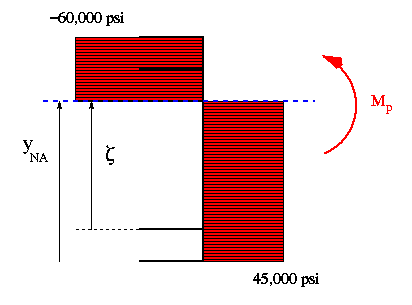
Using the stress variation shown above and the corresponding force summation,
we find the location of NA as follows
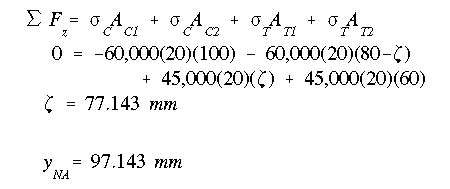
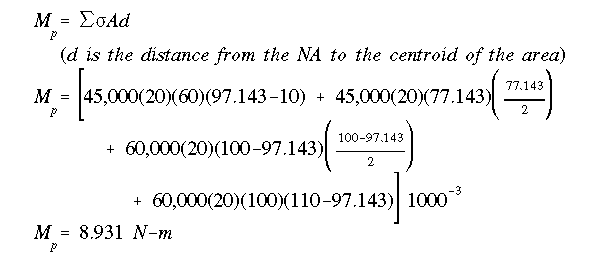
 To Section II.4
To Section II.4